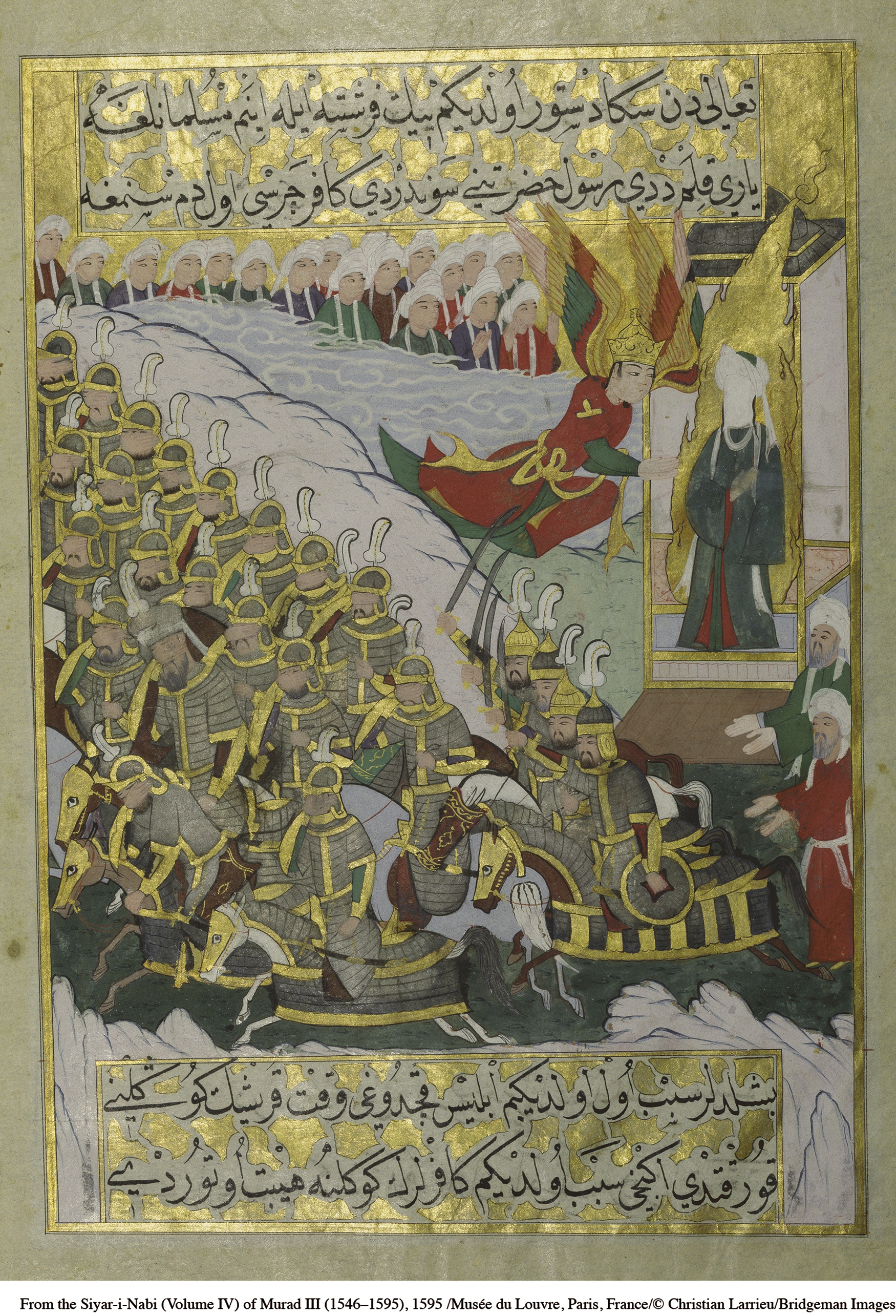9.3 The Battle at Badr
The circumstances of Muhammad’s life required that he act as a political leader at the same time as he was seeking to convey a new religious message. By 622, intense hostility to that revolutionary message had forced him out of Mecca to a new base in Medina, where he became a lawgiver, creating a social and political framework for his small band of followers. Violent opposition from various quarters and the absence of any overall political authority in the Arabian Peninsula made it necessary for Muhammad to also become a military strategist to protect his fledgling community. In these ways, his task was very different from that of the Buddha or Jesus.
Among the leading adversaries of the embryonic community of “believers” in Medina were the forces of Muhammad’s own Quraysh clan in Mecca. An important turning point in that struggle occurred in 624 at the Battle of Badr in western Arabia. Despite being outnumbered more than three to one (about 1,000 Meccans but only around 300 “believers” from Medina), Muhammad’s forces emerged victorious. While the Meccans fought in traditional Arab style with much individual bravado and no unified command, Muhammad’s men were carefully drilled, well organized, and effectively led. To Muslims, however, it was not human ingenuity but divine intervention that occasioned this unlikely triumph. The Quran reported that Allah had sent some 3,000 angels to assist Muhammad’s forces and reminded the believers that “it was not you that slew the enemy, but it was God that slew them.”
This battle established the new Muslim community as a force to be reckoned with in Arabia and was enormously encouraging to the “believers.” It was also the occasion for a series of revelations to Muhammad about the treatment of prisoners. They should not be abused in any way, but released, offered for ransom, or allowed to earn enough money to purchase their freedom. According to a traditional saying (hadith) of the Prophet, Muhammad asked his followers to treat captives as members of their own families. “You must feed them as you feed yourselves and clothe them as you clothe yourselves.”
Visual Source 9.3, a sixteenth-

- What elements of this image might suggest a natural or human understanding of the Muslim victory at Badr? And what might indicate divine intervention as an explanation?
- Documentary sources report only two horses and seventy camels on the side of the “believers” at this battle and suggest a more ragtag group of fighters than the image portrays. Why do you think the artist presented a rather more impressive picture?
- What religious meanings did Muhammad and Muslims in general extract from the battle at Badr?